I had been waiting on my sweep to extend my stacks 3' and put a coupling on a join I discovered right at the cut-out flue on the Nashua downstairs, and all that got done this week.
I bought a bag of Roxul and used about two bats to stuff up above the Nashua, and it wasn't too tough. So the next day I decide to do the insert. The Rockland is a crazy install in a massive masonry wall. Well, I got the sheet metal cover off and crawled behind the insert.
If my knees bent the other way I could have stood up in the cavity!! It was huge in there. No WONDER I've never been able to get much heat out of that insert. I couldn't get positioned to put Roxul up where the liner went to the flue, so I had to form a type of ceiling using a ledge and a few vertical pieces of Roxul to make sure it doesn't come down. I have another clever buddy and we'll rig up something permanent. Probably ended up with three unused bats equivalence, so quite a lot fit easily in there with much space left over.
Lit the first fire of the season tonight and it seems to be a big difference. I also went with Jatoxico's suggestion to pull the unit forward a slight amount. That's letting a lot of heat get out from the surround. Maybe, maybe, MAYBE I'll start to see this thing meet expectation.
Jotul buyers, if your seller/installer doesn't want to install a blockoff plate, they are no-good %^@@# sonsa'*&*&^**!! (<--Everything but a child of God) It'll turn out to be critical in my case.
Thanks to the forum!
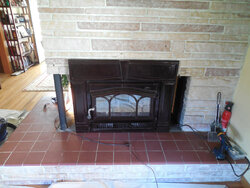
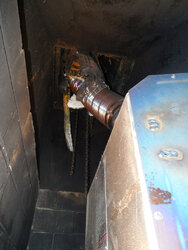
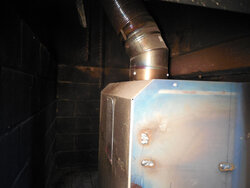
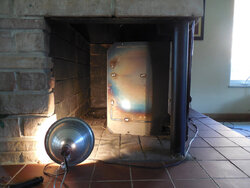
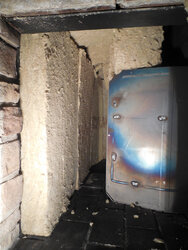
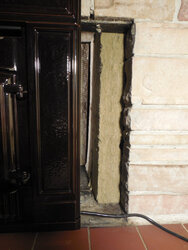
I bought a bag of Roxul and used about two bats to stuff up above the Nashua, and it wasn't too tough. So the next day I decide to do the insert. The Rockland is a crazy install in a massive masonry wall. Well, I got the sheet metal cover off and crawled behind the insert.
If my knees bent the other way I could have stood up in the cavity!! It was huge in there. No WONDER I've never been able to get much heat out of that insert. I couldn't get positioned to put Roxul up where the liner went to the flue, so I had to form a type of ceiling using a ledge and a few vertical pieces of Roxul to make sure it doesn't come down. I have another clever buddy and we'll rig up something permanent. Probably ended up with three unused bats equivalence, so quite a lot fit easily in there with much space left over.
Lit the first fire of the season tonight and it seems to be a big difference. I also went with Jatoxico's suggestion to pull the unit forward a slight amount. That's letting a lot of heat get out from the surround. Maybe, maybe, MAYBE I'll start to see this thing meet expectation.
Jotul buyers, if your seller/installer doesn't want to install a blockoff plate, they are no-good %^@@# sonsa'*&*&^**!! (<--Everything but a child of God) It'll turn out to be critical in my case.
Thanks to the forum!






Last edited:




